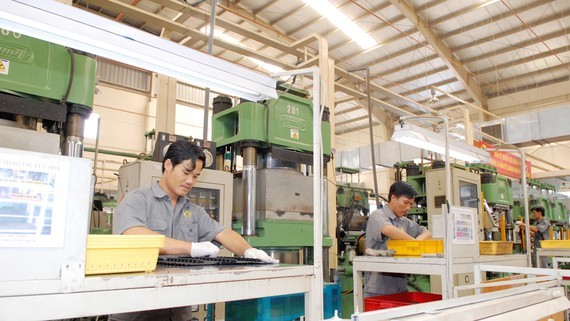
For instance, export turnover of agricultural products in the first eight months of this year merely reached US$11.27 billion, down 8.8 percent over the same period last year. Although fiber and yarn products still kept a growth of 16 percent by the beginning of September, value added was not high. So far, export turnover has dropped by more than 10 percent over the same period last year.
Mr. Vu Duc Giang, chairman of the Vietnam Textile and Apparel Association, explained that the fact that China's continuous devaluation of the renminbi has created a wide gap between the US dollar and the Chinese renminbi. Meanwhile, Vietnamese enterprises import cotton from the US then produce and export yarn to China so margins lessen. Enterprises who signed contracts with payments in Chinese renminbi saw sharper decline in profits. In addition, other yarn importers of Vietnam, namely Turkey, South Korea and Egypt, continuously applied trade remedies and raised import tariffs on this product, weakening competitive edge of Vietnamese yarn.
According to Mrs. Ly Kim Chi, chairwoman of the Food and Foodstuff Association of Ho Chi Minh City, Chinese authorities have promulgated several new regulations, such as all farmed or nature fish products must be taken from registered factories and when making customs declaration exporters must show health certificates issued by Vietnam. China also announced some regulations relating to goods administration and supervision, especially increasing control on quarantine. These have caused several difficulties for export.
However, other products, including electricity, electronics, machinery spare parts, electronic components, computers, rubber, plastic, food and foodstuff showed positive signals by constantly posting a steady growth of above 10 percent since the beginning of this year. Noticeably, export turnover of cell phones of all kinds and components in August reached $5.91 billion, an increase of 48.1 percent over the previous month, sending eight-month export turnover to $33.39 billion. This impressive growth was contributed by exporting to the US, the EU, Japan and South Korea. At the present, the US and the EU remain the key export markets of this product, accounting for more than 60 percent of total export turnover.
There are only three months left until the end of this year. According to experts, in order to achieve export goal, enterprises should be more active in searching and expanding market, diversifying goods supply and export markets. Commercial counsellor of Vietnam in Australia said that many enterprises have actively switched from raw material export to processed and branded product export. Market approach was also upgraded intensively and tightly with foreign distribution channels. This has helped Vietnamese enterprises to standardize quality and design of goods since production phase as well as reduce risks of recalling their goods for not meeting export requirements. As for food processing industry, enterprises have also actively participated in restaurant and hotel supply chains then will step by step approach consumers and enter deeply into the market.
Mr. Vu Duc Giang shared that although fiber and yarn industry of Vietnam declined sharply in export turnover, garment firms have seen a sudden rise in the number of orders shifting from China. Mr. Tran Viet Anh, vice chairman of Business Association of Ho Chi Minh City, said that since the beginning of this year, many enterprises have changed their production technology towards focusing on environmentally friendly products, technical plastic or export plastic products that are not in the list of products that are imposed tariffs or restricted from use. Therefore, it can make up for total export turnover of the industry.
According to economic experts, there are only three months left to speed up to achieve the goal of export growth. Based on the ability as well as flexibility in searching and changing export markets of Vietnamese enterprises, it is possible for them to obtain export goal of this year.
























